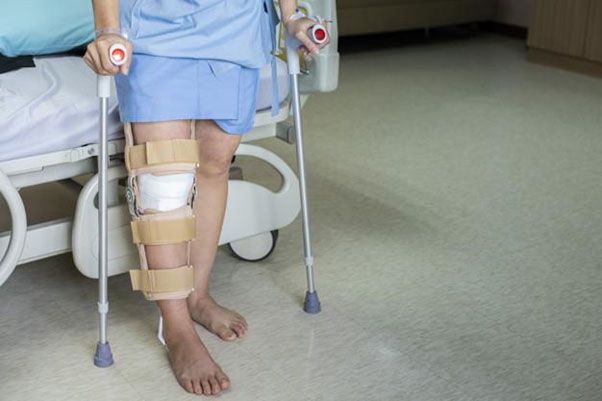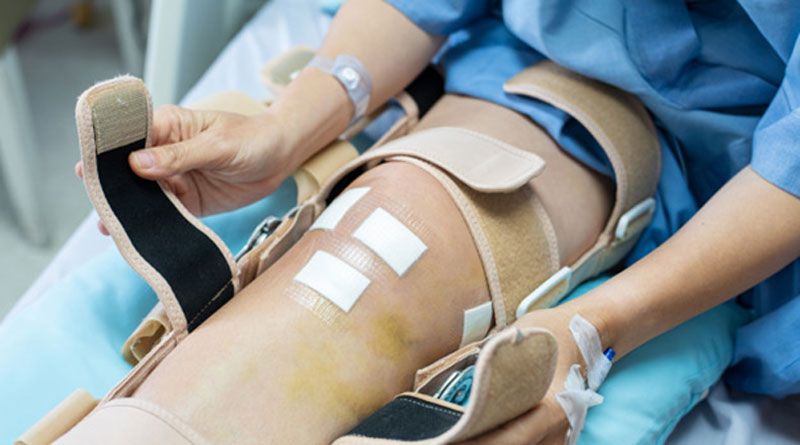The PCL (posterior cruciate ligament) is a ligament that runs through the back of the knee. Ligaments are strong tissue bands that link bones.
Dr. Ratnav Ratan, an orthopedist, in Gurgaon states that the PCL joins your thigh bone (femur) to your shin bone, analogous to the anterior cruciate ligament (ACL) (tibia). The PCL can be torn, despite being more prominent and more robust than the ACL.
PCL rips account for fewer than 20% of all knee ligament injuries. Injury to the PCL can also cause damage to the other ligaments and cartilage in the knee.
PCL Injuries and Their Causes
A strike to the knee when it is bent is a common cause of PCL injuries. Among the most common reasons are:
- During a car crash, slamming one’s knee onto the dashboard.
- Falling on one’s knee while bending it
Sports frequently cause PCL injuries. These injuries are prevalent in the following areas:
- Football.
- Cricket.
- Skating.
- Accidents.
The PCL can be damaged in a variety of ways, from mild to severe. PCL injuries are divided into the following categories.
- Grade I: A partial tear in the PCL.
- Grade II: The ligament is partially ruptured and has a looser texture than
- Grade III: The ligament is entirely torn, causing instability in the knee.
- Grade IV: The PCL and another ligament in the knee has been injured.
PCL issues can be either acute or chronic. A sudden injury causes critical PCL issues. Long-term harm to the PCL causes chronic PCL issues.
PCL Injury Symptoms
After a PCL injury, most people don’t feel or hear a “popping” feeling in their knee. It is more likely after an ACL injury.
People frequently believe they have a minor knee problem after PCL damage. They could try to carry on with their usual routine. Symptoms that may arise, however, include:
- Inflammation (mild to severe)
- Knee discomfort
- A shaky feeling in the knee
- Inability to walk or bear weight on the knee
A PCL injury can cause osteoarthritis in the knee over time.
PCL Issues Diagnosis
Dr. Ratnav Ratan who is an orthopedist in Gurgaon mentions that these are the following measures he uses to diagnose a PCL injury:
History: Your doctor will inquire what you were doing at the time of the injury, such as driving or participating in sports. They’ll also ask about:
- If your knee was hurt while bent, straight, or twisted
- How did your knee feel after it was injured?
- If you’ve had any symptoms since your injury, tell us about them.
Examination of the body: You lie on your back with your knee bent in a standard test for PCL injury. After that, your doctor examines your knee while pressing against your upper shin. A PCL injury is indicated by abnormal knee mobility during this test.
An arthrometer may also be used to assess your condition. This presses against your leg to determine how tight the ligament is. You may also be asked to walk by your doctor. An irregular walking motion could indicate PCL damage.
Imaging: X-rays can reveal the extent of a PCL injury. They can detect bone fragments that have broken loose as a result of the damage. The use of magnetic resonance imaging (MRI) to create images of a PCL tear is widespread. A MRI scan can pinpoint the exact location of an incision. A bone scan may be required in the case of persistent PCL injuries to check for bone deterioration.

Treatment of Posterior Cruciate Ligament Injuries without Surgery
Some posterior cruciate ligament injuries can be treated without surgery.
The following situations may not necessitate surgery:
- Grade I or II acute knee ligament injuries when no additional knee ligaments are affected
- Newly diagnosed chronic injuries affecting the PCL primarily but causing no symptoms
After a PCL injury, some people require physical treatment. With or without surgery, this rehabilitation may be required.
The following are some examples of rehabilitation:
- Initially, using crutches, then gradually increasing the amount of weight on the knee.
- Having your leg moved through its range of motion by a machine or a therapist
- Using a knee brace to provide temporary assistance
- Stabilizing your knee by strengthening your thigh muscles.
- Swimming or treadmill walking or running
- A sport specific training requirements
Injury to the posterior cruciate ligament requiring surgery.
Patients with the following conditions are more likely to require surgery:
- PCL injuries in which bone fragments have shattered and become loose
- Ligament injuries that affect more than one ligament
- Symptomatic chronic PCL looseness, particularly in athletes
If a fragment of bone is pulled away, the orthopedist may use a screw to put it back together.
Instead of sewing the torn PCL back together, surgery for a torn PCL involves replacing it with fresh tissue. The ligament can be replaced with one of the following:
- Donor tissue from a deceased person
- A tendon fragment was relocated from another part of the body, such as the back of the thigh or the heel.` as an “open” procedure. A big incision in the knee is required for this procedure. A gadget called an arthroscope is a less invasive choice. The surgeon uses smaller incisions. The period required for recovery after surgery can range from 26 to 52 weeks.

Namaste UI collaborates closely with clients to develop tailored guest posting strategies that align with their unique goals and target audiences. Their commitment to delivering high-quality, niche-specific content ensures that each guest post not only meets but exceeds the expectations of both clients and the hosting platforms. Connect with us on social media for the latest updates on guest posting trends, outreach strategies, and digital marketing tips. For any types of guest posting services, contact us on info[at]namasteui.com.

